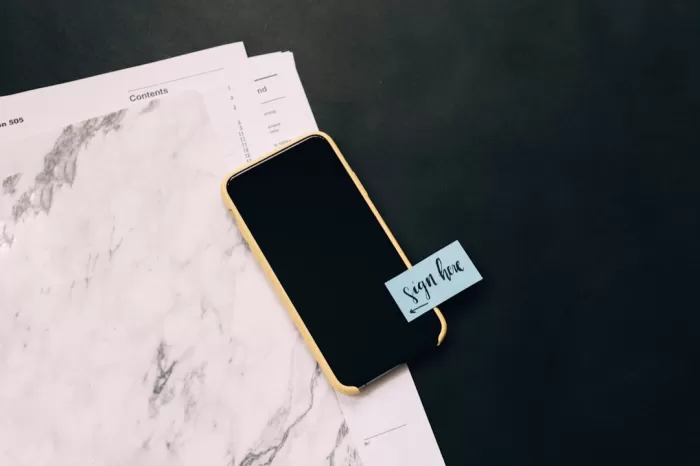
Step-by-Step Guide: How to Fund Your LLC with Personal Money
Assessing Your LLC's Financial Needs
Step 1: Determine Your LLC's Financial Needs
Before funding your LLC with personal money, it's crucial to assess your company's financial requirements. Calculate the costs of starting and running your business, including expenses like equipment, inventory, marketing, and operational costs.
Step 2: Estimate Your Personal Contribution
Once you have a clear understanding of your LLC's financial needs, evaluate how much personal money you can invest. Consider your savings, assets, and willingness to take on personal financial risk to support your business.
Step 3: Create a Detailed Budget
Develop a comprehensive budget outlining how much of your personal funds will go towards different aspects of your LLC. This budget should include both initial investment amounts and ongoing financial commitments.
Step 4: Explore Funding Options
If your personal funds are insufficient to cover all your LLC's financial needs, consider alternative funding sources. This may include small business loans, grants, crowdfunding, or seeking investors.
Step 5: Monitor Your Finances
Once you've funded your LLC with personal money, keep a close eye on your company's financial health. Regularly review your budget, track expenses, and assess the return on investment to ensure the sustainability of your business.
Setting a Budget for Personal Investment

Step 1: Assess Your Financial Situation
Before funding your LLC with personal money, evaluate your current financial status. Calculate your savings, assets, and liabilities.
Step 2: Determine the Amount to Invest
Decide how much of your personal funds you are willing to invest in your LLC. Consider the initial costs, operating expenses, and future growth.
Step 3: Create a Budget
Develop a budget outlining how much money you will allocate for different aspects of your LLC, such as product development, marketing, and overhead costs.
Step 4: Identify Potential Risks
Assess the risks associated with investing personal funds in your LLC. Consider factors like market volatility, competition, and economic conditions.
Step 5: Implement Investment Strategies
Once you have a clear budget and risk assessment, implement investment strategies that align with your financial goals and the growth potential of your LLC.
Identifying Funding Sources

Step 1: Review Your Personal Finances
Before funding your LLC with personal money, assess your current financial situation. Look at your savings, investments, and any other available funds.
Step 2: Consider Personal Loans
If you need additional funds, you could consider taking out a personal loan. Research different lenders and compare interest rates and terms.
Step 3: Use Personal Savings
If you have personal savings set aside, this could be a straightforward way to fund your LLC. Be mindful of how much you are comfortable investing.
Step 4: Utilize Credit Cards
Another option is to use credit cards to fund your LLC. Be cautious of high-interest rates and make sure you have a plan to pay off the balance.
Step 5: Explore Crowdfunding
Crowdfunding platforms like Kickstarter or Indiegogo can be a creative way to raise funds for your LLC from a wider audience.
Step 6: Seek Investment from Family and Friends
If you have supportive family or friends, you could consider pitching your business idea to them for potential investment.
Transferring Personal Funds to Your LLC

Step 1: Determine the Amount to Transfer
Calculate the exact amount of personal funds you want to invest in your LLC. For example, if you need $10,000 to cover initial startup costs, ensure you transfer this amount.
Step 2: Set Up a Separate Business Account
Open a business bank account in the name of your LLC. This will help you keep personal and business finances separate. For instance, open a business checking account at a local bank.
Step 3: Transfer Funds
Transfer the determined amount from your personal account to your new business account. For example, transfer $10,000 from your personal savings account to your LLC's business checking account.
Step 4: Document the Transfer
Keep detailed records of the fund transfer for accounting purposes. You can create a document stating the date, amount, and purpose of the transfer. This will help with tracking and tax purposes in the future.
Step 5: Consult with a Professional
Consider consulting with a financial advisor or accountant to ensure proper documentation and compliance with regulations. They can provide guidance on the best way to fund your LLC with personal money.
Keeping Detailed Records of Investments

Step 1: Determine the Amount of Personal Funds Needed
Calculate the initial capital required to fund your LLC. For example, if you need $10,000 to start your business, this will be the amount of personal funds you need.
Step 2: Transfer Personal Funds to the LLC Account
Transfer the determined amount from your personal bank account to your LLC's business account. For instance, transfer $10,000 from your personal savings account to the LLC account.
Step 3: Keep Detailed Records of the Transaction
Document the transfer of personal funds by keeping records such as bank statements, receipts, and deposit slips. This will help you track your investments and maintain accurate financial records.
Step 4: Categorize the Investment in Your Accounting Software
In your accounting software, categorize the transfer of personal funds as an equity investment. This will ensure that your financial statements accurately reflect the capital you've injected into the business.
Step 5: Consult with a Tax Professional
Seek advice from a tax professional to understand the tax implications of funding your LLC with personal money. They can help you navigate tax obligations and deductions related to your investment.
Step 6: Monitor Your Investment Performance
Regularly review the performance of your personal investment in the LLC. Compare actual results against projected outcomes to assess the profitability and sustainability of your business.
Evaluating the Tax Implications

Funding Your LLC with Personal Money
When starting a Limited Liability Company (LLC), you may choose to fund it with your personal money. Here is a step-by-step guide:
- Evaluate Your Personal Finances: Take a close look at your personal financial situation to determine how much money you can comfortably invest in your LLC.
- Open a Separate Bank Account: To keep your personal and business finances separate, consider opening a dedicated business bank account for your LLC.
- Transfer Funds: Transfer the desired amount of personal funds into your LLC's bank account. This can be done through a simple bank transfer or writing a check from your personal account to your LLC.
- Document the Transfer: Keep a record of the transfer for tax and accounting purposes. This documentation will be important when filing your taxes.
Evaluating the Tax Implications
When funding your LLC with personal money, it's crucial to consider the tax implications. Here are some key points to keep in mind:
- Capital Contributions: Personal funds invested in your LLC are considered capital contributions. These contributions may have tax implications, so it's advisable to consult with a tax professional.
- Tax Deductions: Depending on your jurisdiction, you may be able to deduct capital contributions from your personal taxes. Again, seek advice from a tax expert to understand the specific rules that apply to your situation.
- Profit Distribution: Any profits generated by your LLC will be subject to taxation. The way profits are distributed among LLC members can also impact the tax liabilities of individual members.
Seeking Professional Advice

Step 1: Assess Your Personal Finances
Before funding your LLC with personal money, evaluate your current financial situation. Look at your savings, investments, and available cash.
Step 2: Determine the Amount to Invest
Decide how much money you are willing to invest in your LLC. Consider the initial costs of starting the business and any ongoing expenses.
Step 3: Open a Separate Bank Account
It's crucial to keep your personal and business finances separate. Open a business bank account to track expenses and income accurately.
Step 4: Document the Investment
Record the funds you transfer from your personal account to the LLC account. Keep receipts and statements for future reference.
Step 5: Seek Professional Advice
Consult with a financial advisor or accountant to ensure you are making the best decisions for your LLC. They can provide guidance on tax implications and financial strategies.
Reinvesting Profits for Growth

Step 1: Assess Your LLC's Financial Needs
Before funding your LLC with personal money, evaluate the financial requirements of your business. Consider expenses such as operating costs, marketing, and expansion plans.
Step 2: Transfer Personal Funds to Your LLC
To infuse personal funds into your LLC, you can transfer money from your personal bank account to your business account. Keep detailed records of these transactions for tax purposes.
Step 3: Document the Investment
It's essential to document the investment of personal funds into your LLC. Create an agreement or promissory note outlining the amount, terms, and conditions of the investment.
Step 4: Reinvest Profits for Growth
Once your LLC starts generating profits, consider reinvesting a portion back into the business for growth. This can help expand operations, develop new products, or enter new markets.
Step 5: Monitor Financial Performance
Regularly monitor your LLC's financial performance to ensure that the use of personal funds and reinvested profits is contributing to the growth and success of your business.
Step 6: Seek Professional Advice
If you're unsure about funding your LLC with personal money or reinvesting profits, seek advice from a financial advisor or accountant to make informed decisions.
Best Practices for Email Marketing Campaigns




